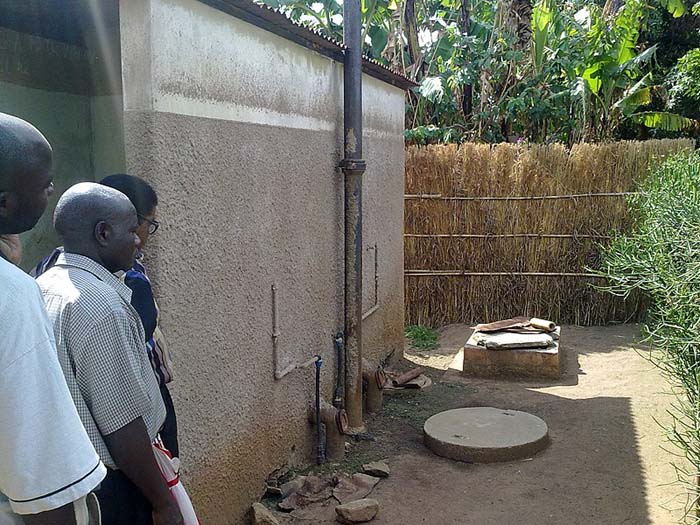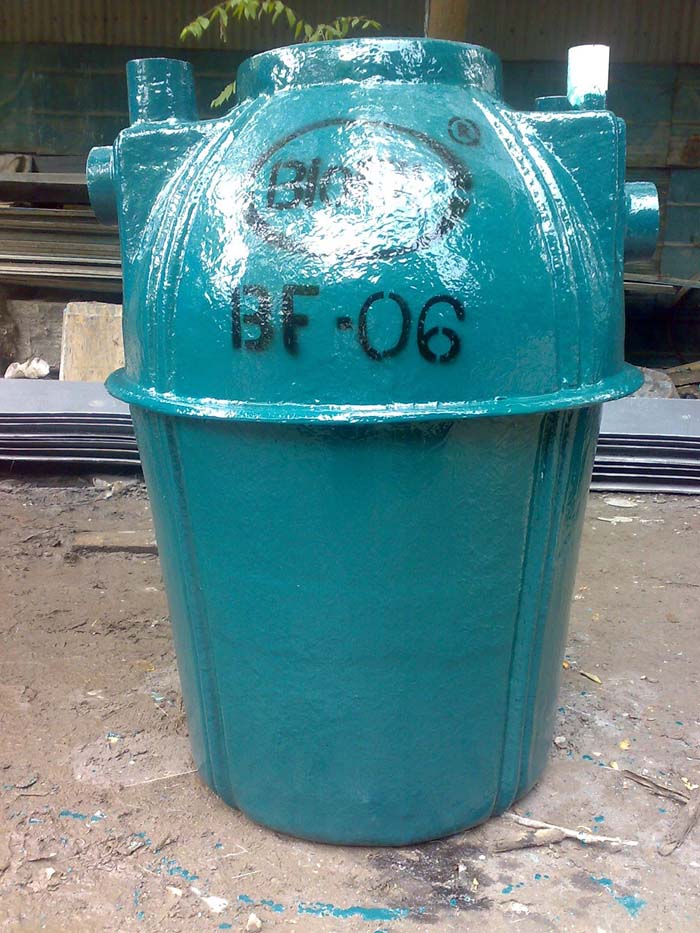
Maintenance is key to keeping a bio septic system running smoothly and efficiently over time. Bio septic systems, often called biological septic systems, are state-of-the-art wastewater treatment systems that treat domestic waste by means of natural bacterial processes. In places where centralized sewage systems are not available, these systems provide an eco-friendly alternative for wastewater management.
Understanding a Bio Septic System
A bio septic system uses a mix of aerobic and anaerobic bacteria to break down organic materials in wastewater. Bacteria break down the organic material, turning it into simpler substances. Then, solid waste descends to the bottom of a series of tanks in the system. Soil absorption systems and leach fields are common methods for the environmentally safe release of treated wastewater.
Steps on how to maintain a bio septic tank
The effectiveness and durability of a bio septic tank depend on regular maintenance. The longevity and effectiveness of the tank’s waste processing, the absence of unpleasant odors, and the protection of the environment are all dependent on regular maintenance. A bio septic tank requires the following maintenance:
- Local Regulations and Compliance
- Upgrade as Needed
Adapt the system to meet the needs of the local government by making any necessary modifications or upgrades.
- Inspections and Permits
Before installing a bio septic system, check that it meets all environmental and health requirements in your area.
- Pumping the Tank
- Record Keeping
Be sure to document the dates of pumping and any maintenance that has been done.
- Hire Experts
If you need the tank pumped, call a professional septic service.
- Frequency
Depending on the tank’s size and use, the typical interval is three to five years.
- Protect the Drain Field
- Divert Water
Keep driveway, roof, and other surface runoff away from the drain field.
- Plant Properly
To keep roots from blocking the system, only plants with shallow roots should be planted over the drain field.
- Avoid Heavy Loads
The drain field is not a good area to place heavy objects or park cars.
- Water Conservation
- Repair Leaks
Make sure the tank isn’t going to be overloaded by fixing any leaking taps.
- Stagger Water Use
Spreading out the washing of dishes and clothes throughout the week will reduce the strain on the tank.
- Use Water-Efficient Fixtures:
Install in low-flow taps, showerheads, and toilets
- Frequent Use Habits
- Educate Family Members
Everyone living there should be aware of what may and cannot be put into the bio septic system.
- Moderate Use
Keep the septic system in check, particularly when you’re hosting visitors or using more water than usual.
- Waste Management
- Proper Disposal of Grease
Grease, oils, and fats should not be poured down the drain because they can cause clogs.
- Limit Chemicals
To keep the tank’s beneficial bacteria alive, don’t use detergent or bleach too often.
- Avoid Non-Biodegradables
Dispose of plastics, diapers, wipes, or feminine hygiene products in the trash, not the toilet.
- Expert Maintenance
- Emergency Plans
In case of an emergency, be ready by having the number of a dependable septic service on hand.
- Yearly Checkups
Even if you don’t think you need to pump, have a septic expert examine your system every year.
- Inspect Frequently
- Monitor Levels
If you want to know if you need to pump the tank, look at the scum and sludge levels.
- Look for problems
Be on the lookout for any strange smells, cracks, wear, or leaks.
- Frequency
Every one to three years, check the tank.
- Biological Additives
- Use Bio-Boosters
Adding biological additives on occasion is best for optimal bacterial balance. Before using, speak with an expert.
- Avoid Overuse
Keep additives from taking the place of regular maintenance.
Following these procedures is important to keep your bio septic tank running smoothly, prolong its life, and reduce its negative effects on the environment.
Importance of Maintenance
It is best to service a bio septic system regularly to avoid problems like system failures, overflows, and clogs. Regular maintenance guarantees the system’s lifespan, environmental protection, and avoidance of expensive repairs. By keeping your bio septic system in good repair, you can reduce the likelihood of contaminants seeping into nearby bodies of water or groundwater.

Key Maintenance Practices
- Use of Biological Additives
Biological additives, which increase bacterial activity, enhance the efficiency of waste breakdown. Nevertheless, it’s important to use them exactly as directed to avoid any negative effects.
- Monitor Water Use
Excessive water use might overwhelm the septic system. It’s crucial to refrain from activities that could simultaneously add a lot of water to the system and practice water conservation.
- Pump the Tank
The only way to keep the septic tank from overflowing is to pump it periodically to eliminate the built-up sludge. Pumping should be done every three to five years, though this can vary depending on tank size and home use.
- Proper Waste Disposal
Make sure that the bio septic system only accepts biodegradable waste. Because they can upset the bacterial balance and block the system, grease, chemicals, and non-biodegradable things should not be flushed down the toilet.
- Frequent Inspections
Carry out regular inspections to check for clogs, leaks, or wear. This will help you detect and prevent potential issues.
Benefits of a Well-Maintained Bio Septic System
If you want your bio septic system to work well and last a long time, you need to maintain it correctly. The operational, health, environmental, and financial benefits of a bio septic system that is well-maintained are numerous:
Operational Benefits
- Reliability
Preventative maintenance and inspections minimize the possibility of system breakdowns. This guarantees uninterrupted and dependable operation.
Efficient Waste Breakdown
Properly maintaining the system’s biological processes results in less regular need for pumping and better waste breakdown.
Financial Benefits
- Increased Property Value
A properly operating bio septic system will increase a property’s value and appeal to potential purchasers.
- Save Money
Regular maintenance helps homeowners save a ton of money in the long run by extending the life of the system and avoiding expensive repairs.
Health Benefits
- Smell Control
Keeping up with routine maintenance keeps the system running well, which in turn keeps the air we breathe fresh and clean.
- Minimized Health Risks
Leaking and overflow of untreated sewage can lead to pollution and related health problems, including waterborne infections. However, proper maintenance can prevent this.
Ecological Benefits
- Minimized Pollution
When kept in good condition, a bio septic system efficiently decomposes waste, reducing the amount of potentially dangerous contaminants and pathogens that enter the environment.
- Water Conservation
There is less need for massive water treatment and transportation infrastructure when these systems handle wastewater on-site.
- Environmentally Friendly
A bio septic system treats waste using natural processes instead of energy-intensive processes and chemical treatments.
Best products to use to maintain a bioseptic tank
Properly maintaining a bioseptic tank is essential for its efficient operation. It helps in the decomposition of organic matter and keeps odors and clogs at bay. Some of the greatest tools and methods for keeping a bioseptic tank in good working order are:
- Grease and Solid Waste Management
To avoid buildup and clogs, be careful with what you put down the drain.
- Grease Traps
For the purpose of preventing grease from entering the septic system, install grease traps in kitchen sinks.
- Disposal Management
Do not throw some food leftovers, sanitary products, and wipes down the drain because they are not biodegradable.
- Bio-Active Treatments
The goal of these treatments is to boost the beneficial bacteria already present in the septic tank to do their job even better.
- EcoNow Septic Oxy-Tabs
These pills enhance the aerobic decomposition of waste by introducing beneficial bacteria and oxygen.
- Bio-Sol
Maintains a healthy septic tank with its combination of beneficial enzymes and bacteria.
- Home Product Choices
Use only home products that won’t harm the beneficial bacteria in your septic tank.
- Avoid Harsh Chemicals
Harsh chemicals, antibacterial soaps, and bleach should not be used because they kill beneficial bacteria.
- Biodegradable Cleaners
Prioritize cleaning products that are safe and biodegradable. Ecover and Seventh Generation are two excellent brands to consider.
- Regular Maintenance and Inspection
A bioseptic tank can only stay in good working order with regular maintenance.
- Inspection
Check for overall functionality, clogs, and leaks by having the system inspected once a year.
- Pumping
Set a regular timetable for pumping the tank every three to five years or as needed, depending on its size and use.
- Water Conservation
Reduce water use to keep the system from being overwhelmed and to facilitate the correct decomposition of waste.
- Immediately address leaks
If you want to keep water out of the septic system, fix any leaking faucets or toilets.
- Low-Flow Fixtures
To cut down on water use, put in low-flow taps, showerheads, and toilets.
- Bacterial Enzyme Additives
These additives incorporate beneficial enzymes and bacteria to reduce smells, decrease sludge accumulation, and improve organic waste breakdown.
- Bio-Clean
It helps keep septic systems balanced because of its naturally occurring bacteria and enzymes.
- GreenPig
The maintenance of septic systems is facilitated by yet another efficient product that contains concentrated bacterial formulations.
- Rid-X
A widely-used product that contains natural enzymes and bacteria that are capable of decomposing waste from the home.
- High-Quality Toilet Paper
To lessen the chances of clogs, use toilet paper that is appropriate for septic systems and degrades readily.
- Charmin Ultra Soft
In addition to being gentle and robust, it is also safe for use in septic systems.
- Scott Rapid-Dissolving Toilet Paper
Made especially for RVs and septic systems.
Using bacterial enzyme additives, septic-safe products like Scott Rapid-Dissolving Toilet Paper, GreenPig, or Rid-X, and bio-active treatments like Bio-Sol can help maintain a bioseptic tank. To keep a septic system in good working order, it is necessary to dispose of waste appropriately, be careful when using home products, and conserve water.
Conclusion
Regular pumping, proper waste management, and frequent inspections are all necessary to keep a bio septic system in good working order. These principles guarantee the system’s efficient operation, making it a cost-effective and environmentally beneficial option for wastewater treatment.
